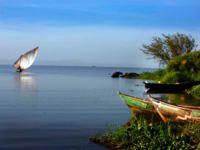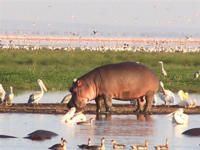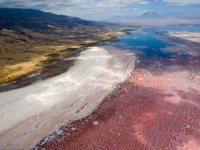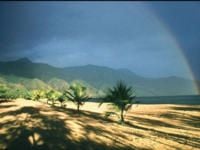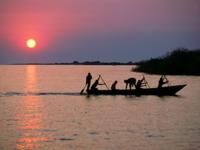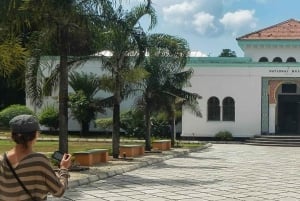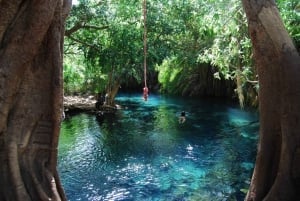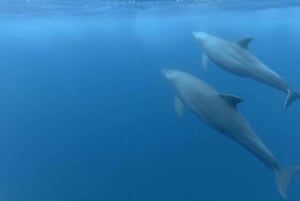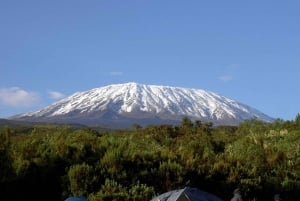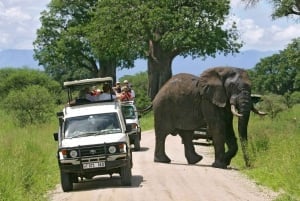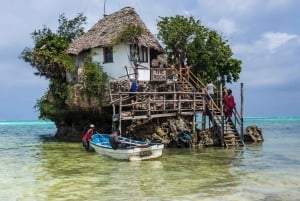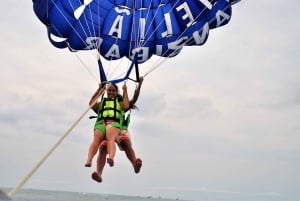Lakes
Lakes
The caustic waters of lakes Natron and Manyara, found in the Rift Valley, are breeding grounds for soda-loving algae, which attract large flocks of flamingos. Lake Victoria, the world’s second –largest freshwater lake, has superb birdlife, and the other lakes, Tanganyika and Nyasa, have hundreds of unique freshwater fish species.
A salt lake situated between the Rift Valley’s Eyasi escarpment and the Kidero Mountains, the area around Lake Eyasi is home to the Hadzabe bushmen, some of the last remaining hunter-gatherers on the continent.
Situated inside Lake Manyara National Park, the lake is home to millions of pelicans, storks and other plentiful bird life, as well as hippos that can be observed at close range. Flamingos can also be seen on the western shore close to a series of hot springs, which trickle into the shallow waters and during the dry season, the lakeshore retreats to leave striking white soda deposits in its wake.
A soda lake at the base of the active Ol Donyo Lengai volcano, the area around Lake Natron is often described as hellishly hot, dry, desolate and its lunar appearance as bizarrely beautiful. Walks around the lake, and to the streams and waterfalls, make for a fantastic adventure off the beaten track. The lake attracts several hundred thousands of flamingos, who have made the lake the most important breeding ground in the world.
Also known as Lake Malawi, the Tanzanian side of Lake Nyasa borders the Livingstone Mountains and stretches out towards Malawi and Mozambique. It is East Africa’s third largest lake, and probably its most beautiful. The towns of Kyela, Itungi, and Matema make good bases from which to visit the lake, which contains approximate 400 known cichlids – a species of freshwater tropical fish. The lakeshore offers endless stretches of sandy beaches ideal for swimming and snorkeling.
Travel to Lake Tanganyika is mostly centred around visiting Gombe Stream and Mahale Mountains National Parks. The easiest access to the lake is the large town of Kigoma, on the northeast shore of the lake. From Kigoma tourists can catch a ferry to the National Parks. The lake’s dark waters form the world’s second-deepest freshwater lake, though lake life only inhabits the top two hundred metres, as there is little or no oxygen further down. The lakeshore is a regional centre for building dhow fishing boats that sail through its rugged waters.
By far the largest lake in Africa, Lake Victoria covers an area of 69,484 square kilometers and has a shoreline of 3,220 kms. Fishing industries and the agricultural land around its shores have made the area an economic centre of Tanzania. Although fishing is a traditional mainstay of the region, coffee and cotton production are increasing the economic importance of the area, especially in Mwanza. For visitors, attractions include trips to Rubondo Island National Park and participating in various cultural tourism programmes on offer around the area. The lake has some spectacular varieties of freshwater tropical fish, many of which are exported to aquariums all over the world. It’s shores are peaceful and pristine, and offer a quiet alternative to the constant movement and bustle of a safari itinerary.



